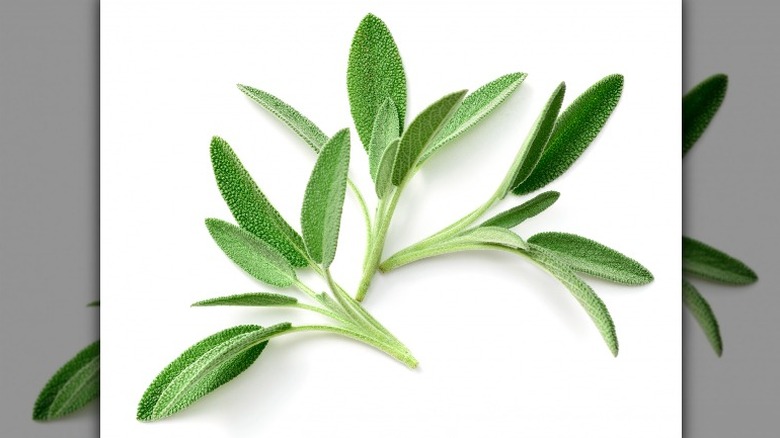Lidia Bastianich Adds This Herb To Fettuccine Alfredo
If you're like many American pasta connoisseurs, you might find fettuccine alfredo a personal friend — but its history is even richer than its delicious trademark sauce. The dish first originated in 1914 when Italian chef Alfredo di Lelio's wife Ines was stricken by a gnarly case of pregnancy-induced nausea (via HuffPost). In an effort to help Ines find a meal she could keep down, Alfredo made her pasta in bianco, a simple dish of pasta tossed with butter and parmesan. When the dish proved successful for Ines's needs — and surprisingly tasty — Alfredo added it to his restaurant's menu.
Then, in 1920, famous silent film actors Douglas Fairbanks and Mary Pickford of the American screen would eat the dish at Alfredo's establishment while on their honeymoon. The sauce was tossed with what happened to be the pasta of the day, fettuccine — the Hollywood couple brought fettuccine alfredo back to the States with them, and the rest is history.
Now, famous chef, Emmy-winning television personality, cookbook author, and restaurateur Lidia Bastianich offers a fresh spin on this classic international favorite, and it's all about one secret ingredient: sage. According to MasterClass, sage is a member of the mint family with an earthy, slightly peppery taste with underlying notes of eucalyptus and lemon. Here's how to make the herb work for your fettuccine alfredo.
Sages for the ages
On the chef's website (aptly called Lidia's Italy), Bastianich raves that sage and butter are "a marriage made in heaven," — which makes the herb an ideal candidate for a butter-heavy dish like fettuccine alfredo. To make Bastianich's signature alfredo sauce with sage, add 2 cups cream, 1 cup pasta water, 4 tablespoons butter, ¼ cup grated Grana Padano cheese, and 10 fresh sage leaves to a large skillet over medium heat. Let the ingredients simmer lightly for a minute or two before adding the al dente fettuccine noodles and tossing with tongs to stir and infuse the sage's transformative flavor. Before serving, Bastianich recommends garnishing the batch with another ¼ cup of the Grana Padano.
According to Cheese.com, Grana Padano is a cheese in the Parmesan family originating in northeastern Italy's Po River Valley region. Its crumbly, grainy texture pairs with its slightly fruity flavor to make for what the site lauds as one of the few varieties of cheese that can rival Parmigiano-Reggiano, the king of cheeses. Although unlike Reggiano, it says, Grana Padano is only aged for around two years, has a milder taste, and typically comes at a much lower price point. In addition, the pairing of Grana Padano, butter, and fresh sage makes for an unexpectedly rich, fruity, earthy, herbal flavor profile, adding new dimensionality to this well-known, beloved dish.

